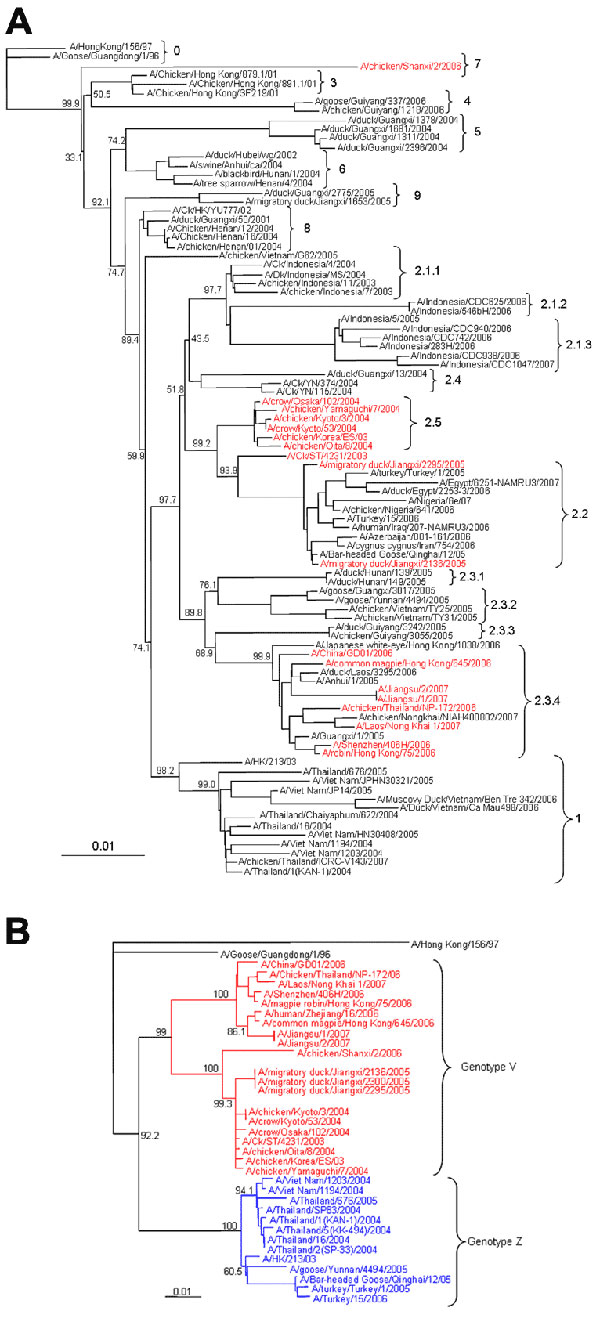Volume 15, Number 1—January 2009
Letter
Avian Influenza Virus (H5N1) in Human, Laos
Appendix Figure

Appendix Figure. Phylogenetic analysis of avian influenza viruses (H5N1). A) hemagglutinin genes and B) polymerase A genes. Pseudosampling = 1,000. Known genotype V viruses are indicated in red, and genotype Z viruses are indicated in blue. Numbers on the right in braces indicate clades and subclades. Scale bars indicate genetic distances between sequences of different taxa. HK, Hong Kong.
Page created: November 22, 2010
Page updated: November 22, 2010
Page reviewed: November 22, 2010
The conclusions, findings, and opinions expressed by authors contributing to this journal do not necessarily reflect the official position of the U.S. Department of Health and Human Services, the Public Health Service, the Centers for Disease Control and Prevention, or the authors' affiliated institutions. Use of trade names is for identification only and does not imply endorsement by any of the groups named above.